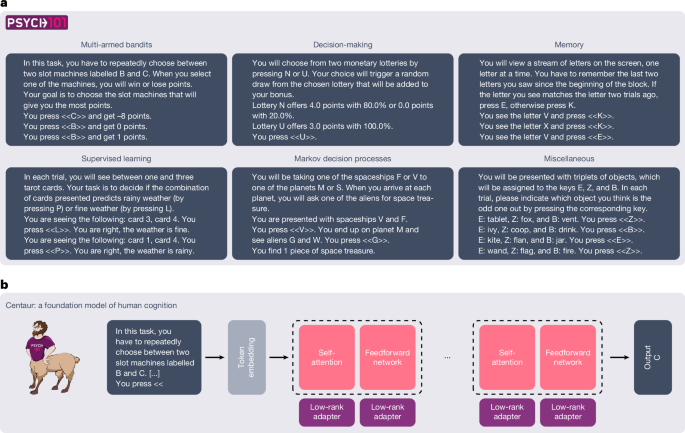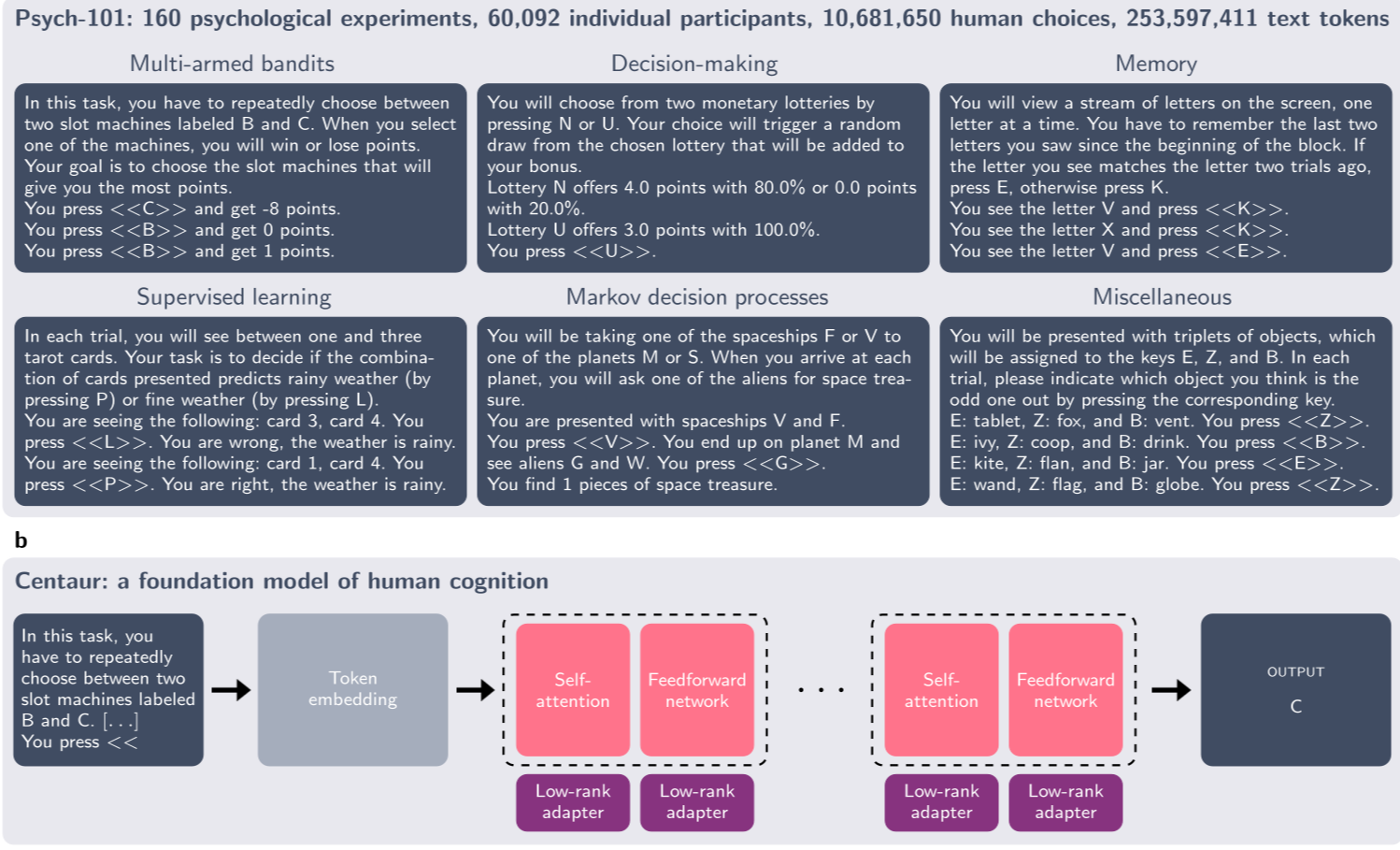On July 2, 2025, researchers from Helmholtz Munich published the groundbreaking Centaur model in Nature, capable of predicting and mimicking human behaviour across various situations. Led by Marcel Binz, the team created the Psych-101 dataset containing over 10 million decisions from 60,000 participants across 160 psychological experiments, then used it to fine-tune the Llama 3.1 70B language model. The result is a system that performs well not only in familiar experimental settings but also in entirely new tasks it has never encountered before – whether they involve changed storylines, modified task structures, or completely new domains.
Centaur outperformed both the original language model and domain-specific cognitive models in every test, even predicting human reaction times with remarkable accuracy. Although trained exclusively on behavioural data, the model's internal representations align better with human brain activity than those of the base model – confirmed through fMRI studies. According to the researchers, what makes Centaur special is that it bridges understanding and accuracy: it not only predicts human behaviour but helps explain the underlying cognitive processes, such as how people combine different heuristics when making multi-attribute decisions.
Future plans include expanding the dataset with additional cognitive domains and individual differences, along with deeper analysis of the model's internal workings. Institute director Eric Schulz says: "We see enormous potential in these models for understanding cognitive processes," while Binz adds that it's important for such systems to remain transparent and controllable. The research is being conducted at the Helmholtz Institute rather than at technology companies, allowing the focus to remain on fundamental questions in cognitive science rather than commercial interests.
Sources:
1.

2,

3.











